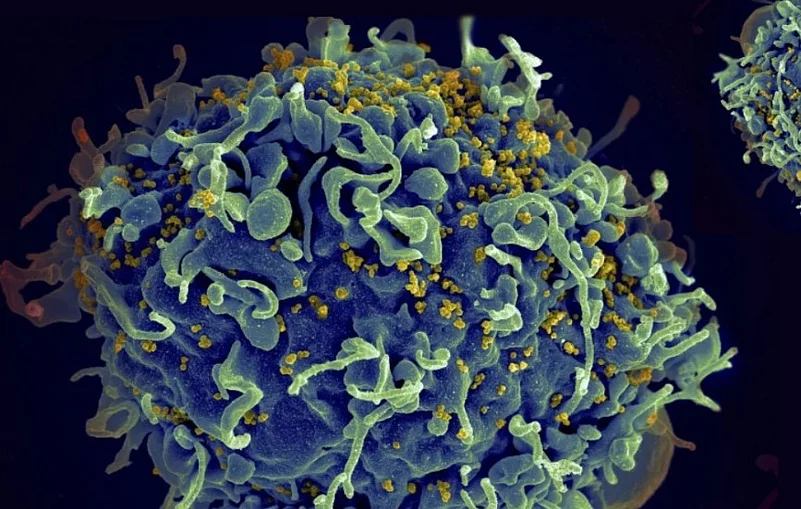The health ministry on Wednesday shared India's HIV (human immunodeficiency virus) statistics, which revealed that infections in the country have decreased by 44 per cent since 2010, outperforming the global reduction rate of 39 per cent.
AIDS or Acquired immunodeficiency syndrome is what the late stage of HIV infection is called, when the body’s immune system is severely damaged because of the virus.
HIV attacks cells that help the body fight infection, making a person more vulnerable to other infections and diseases, even something as regular as a flu.
HIV spreads by contact with certain bodily fluids of an infected person, most commonly during unprotected sex (sex without a condom or HIV medicine to prevent or treat HIV) or by sharing injection or needles.
India's HIV Statistics
Addressing a high-level side event at the United Nations (UN), Union Minister of State for Health Anupriya Patel said on Wednesday that over 2.5 million people are living with HIV in India. The theme of the event at the UN was “Revitalized Multilateralism: Recommitting to Ending AIDS Together.”
She said adult HIV prevalence is at 0.2 per cent and estimated annual new HIV infections are at around 66,400.
New annual HIV infections have decreased by 44 per cent since 2010, outperforming the global reduction rate of 39 per cent.
India offers comprehensive HIV and Syphilis testing to all pregnant women with more than 30 million free HIV tests being conducted annually, Patel added.
India currently supplies over 70 per cent of global anti-retroviral medicines.
She said the government of India "remains steadfast in its goal of ending HIV/AIDS as a public health threat by 2030 through inclusive strategies, partnerships, and renewed multilateralism."
As per a World Bank Group report which carries data from 2010, sexual transmission is responsible for 87.4 percent of reported HIV cases and HIV prevalence is high among sex workers (both male and female) and their clients.
A large proportion of women with HIV appears to have acquired the virus from their regular partner who was infected during paid sex, the report says.
There is no effective cure of HIV, however, effective treatment with HIV medicine, called antiretroviral therapy or ART, can can reduce the amount of HIV in the blood (also called the viral load) to a very low level. This is called viral suppression.
A low viral load which is not detected in lab tests is called having an undetectable viral load. People with an undetectable viral load can will not transmit HIV to their partners through sex.
World's first HIV case to be considered cured was reported in 2007. Timothy Brown from first Berlin patient was the first person to be considered cured of HIV after he underwent a stem cell transplant to treat leukaemia from a donor carrying a rare genetic mutation CCR5-delta 32, which is known to provide genetic resistance to HIV. As per the World Health Organisation, seven people have been cured of HIV as of 2024.


























